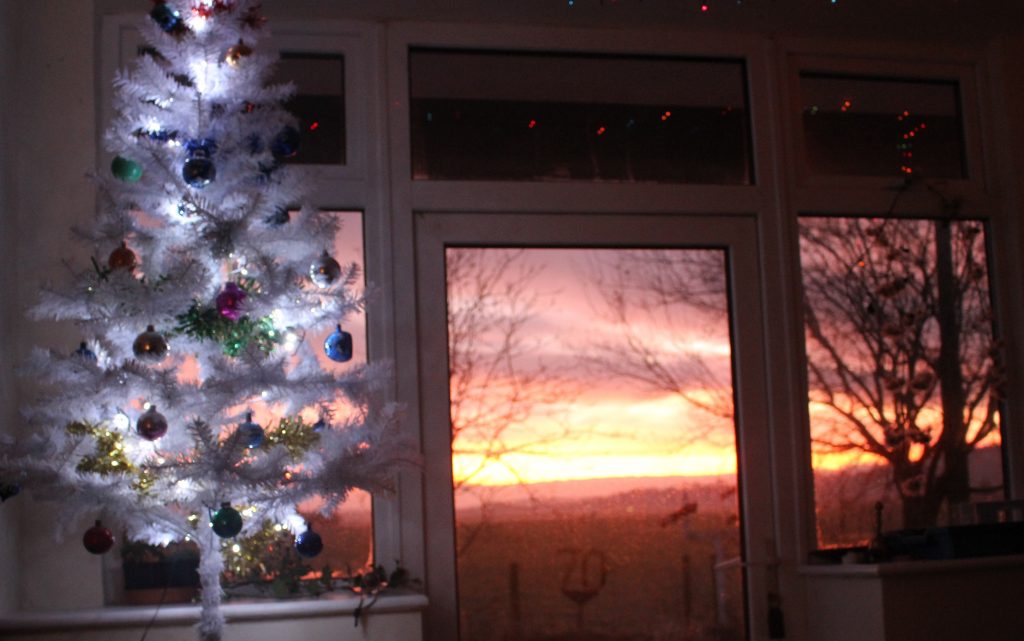
A Christmas tree can be a time machine. Antique or even modern baubles, summoning a land of lost content . . . or so it seems in wishful memory – where happy moments are magnified, all pain and trivia tinselled away. But the Christmas tree is a paradox: cheerful hope and wistful melancholy combined. The distorted reflections in its decorations are either heartening or defeated. Deep purple is the most extreme perhaps . . . or green or blue, who can say – the mood changes as swiftly as the rules of covid. To look up through the wire and plastic branches of a fake tree, bedecked in glitter and lights, induces a simple childlike delight, a heathen joy, or a queasy question mark. Holding a twisted mirror to sincere religious belief, this spangled trophy can also appear a profound embodiment of the debased human situation. And the ghastlier a decorated Christmas tree is, the more dislocating its presence might become. To get completely carried away, a contemplation of this presence and its history can be like a journey to the end of the world, as well as “to a hypothetical paradise of dreams”[i]. I know I’m taking it too seriously, but haunted by rich moments of numinous glamour[ii], of man-made lights against the winter darkness, even if I’m forcing meanings upon it, the confluence of myths surrounding Christmas are second to none, and conceivably the decorated tree has become its apex? From Paganism to Consumerism, it symbolises the lot.

Don’t soft soap yourself with the natural beauty of a real tree! That is an evasion. A pointer towards higher things. One side of the coin only. Obviously, it has the smell of woods and pines, the sense of air, but how long does that last in the average, ridiculously overheated home? The fake green tree – an expensive one made to appear real – might also be a cop out? One of my sons once said to me: “As long as there is some white stuff for a day or so somewhere between 23rd and the New Year non-event, then I feel I have had a white Christmas”. In the future if we have to make do with stick-on snow, or snow in the mind’s eye, the fake white tree – of tree and snow combined – might give our blindness what it lacks. Once decorated, that ghost of Christmas, perfectly encompasses both our aspirational escape and our material tackiness – as well as being a distraction from our tendency to destroy everything. As K says about my £3.50 white tree with berry lights from a clearance sale last January: “it looks like a section from Hell!”. A section we welcome into our home. In the darkness, it can breathe heat and fire (if not enough to keep us warm). While she has disowned it, the younger children love it. They haven’t seen Hell yet! Like me, the no-longer children, say it reminds them of our Lynchian Christmas of a few seasons back. That year, we ran two film festivals in parallel. Wholesome films in the evenings; David Lynch in the afternoon[iii].
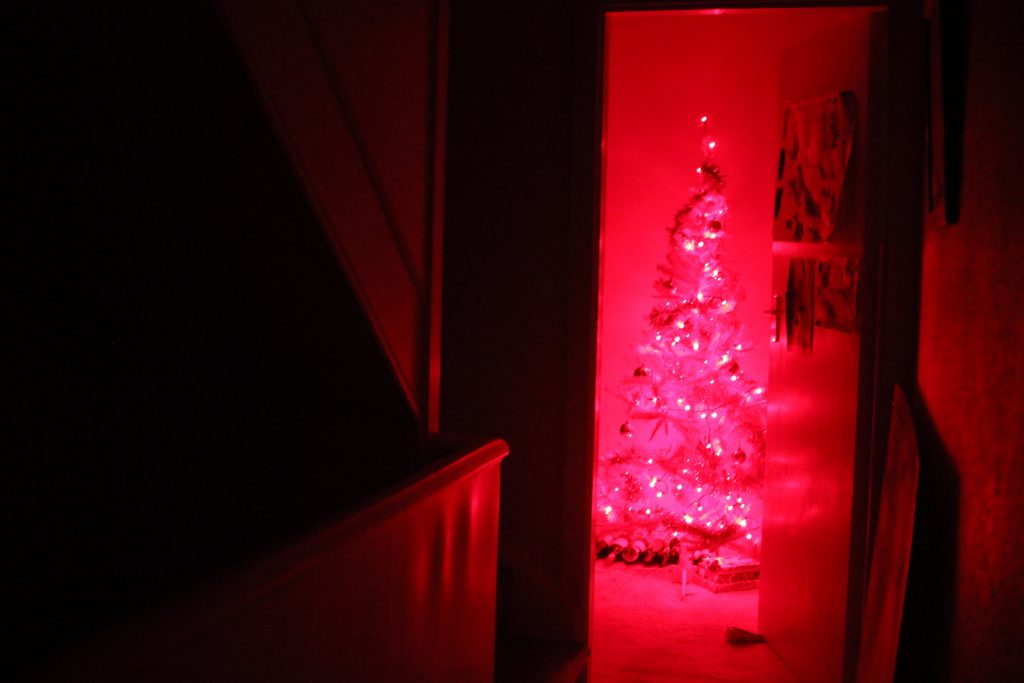
“a section from Hell”, 9th December 2020
Adding to the legitimacy of my white tree, it’s situated in a damper part of the house where white paint frequently flakes from the ceiling – a dusting of snow that has already authenticated the Christmas bottles of wine waiting underneath.
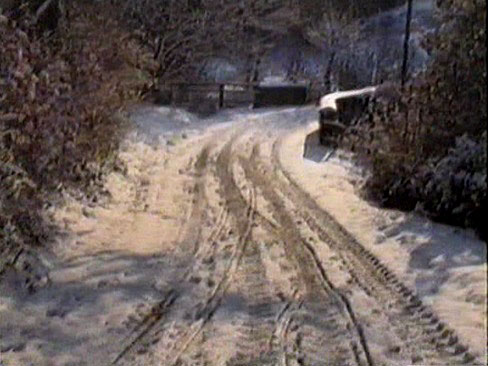
North Devon, 1996
For years, I, and many of the Estate Island generation I knew (those who grew up, geographically and socially exiled from their original communities on large housing estates newly added to towns all over the country particularly in the 1960s[iv]), continued to return ‘home’ for Christmas – the title of home always deferring to the place longest known – its lights made to seem brighter by the tunnel of the past closing around it. For a while this gradually mythical place was where, by deliberate rendezvous or chance, we encountered all our contemporaries and remembered the New Year’s Eve pub lock-ins of yesteryore, the strange parties in morphing villages, lonely walks across iron-frosted fields to isolated monuments or glowing fires . . . from all these jewel bright pictures the rubbish has been removed.
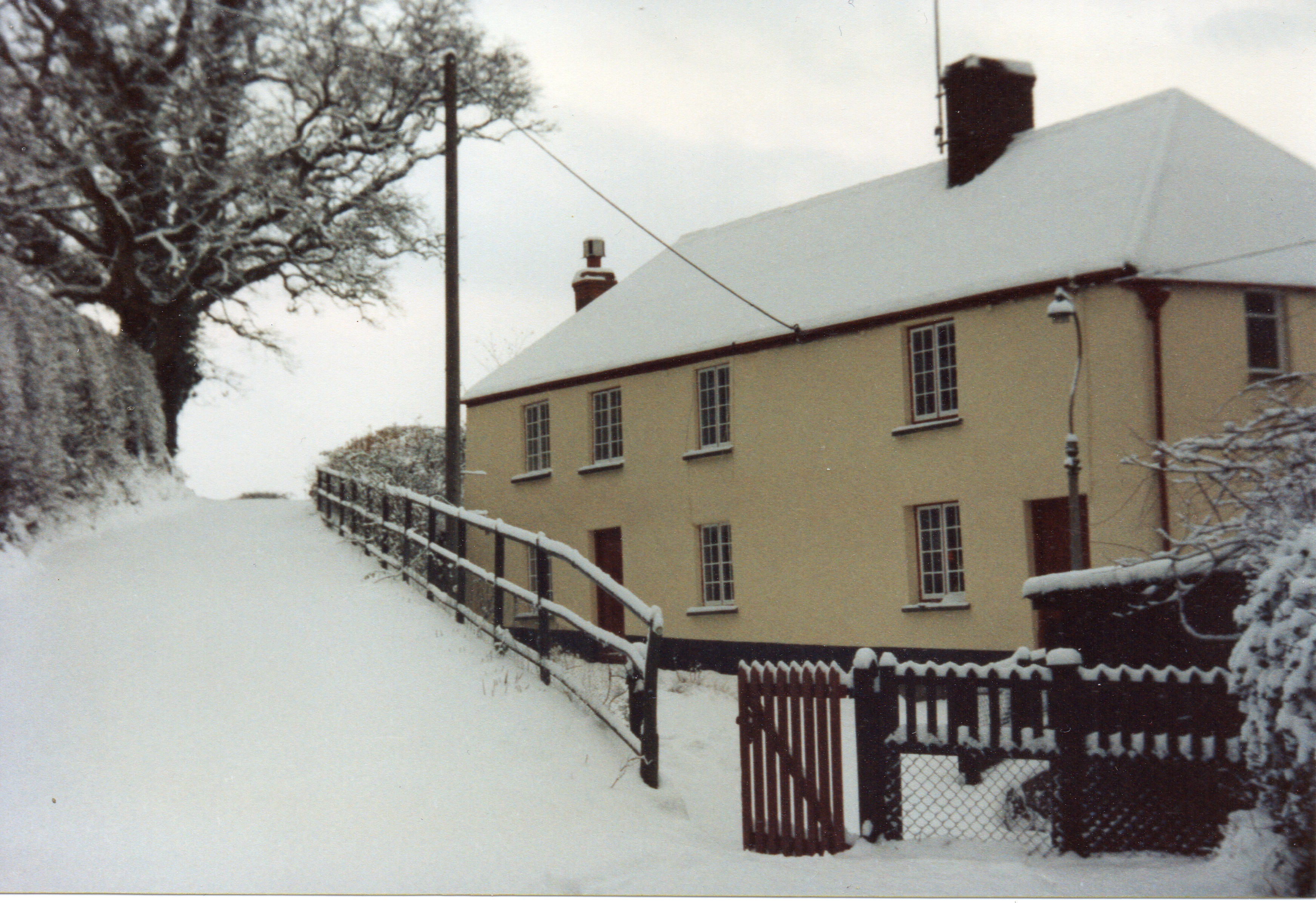
North Devon, 1996
Whether we go ‘home’ from a sense of duty or in search of reassurance, eventually such a homing instinct inevitably fades. I clung onto the lights beyond the tunnel and only live now by trying to dissolve all such tunnels and the chronological time, which with its affiliated rational laws, creates them. Meanwhile, in the so-called real world, when I was about 26, I tried to start building my own home. If that is older than usual, probably the delay was caused by not being a student after the age of 16? In the ten years that followed, Iiving in nine different regions as well as travelling abroad, there’d never been a chance to crystallise a definite home . . . in any case, maybe I didn’t believe in the idea? I wanted to feel each different place as a stranger, with an exile’s intensity: the landscape, the history, the weather. The social situation held little interest for me. Almost all my ‘homes’ of those years were remote. Bypassing the alternative social group which may have arisen at college or university, possibly I embraced the past more than others? After all, without the past there can be no present and our much-vaunted spontaneity, our desire to seize the moment, resembles that of a headless chicken. In any case, I always suffered badly from a homesickness whose exact cause was never easy to pin down. It wasn’t just the absence of family or house or friends. It was as much about landscapes, a volatile sense of hope and despair brought on by the atmosphere of place and season. For me there were always the rusting railway sidings, or those single tracks, the snatches of tramline running to the wood[v] that aim to escape . . . all the stubs of lives that might have been, the people we know must fade away.
Many years earlier, winter in Arrowsby had provided an experience that in similar
fashion had expanded, passing through isolation to dismiss the state of internal
bleakness initially induced.
It had occurred on a sharp, cold evening in the premature darkness after school. By the base of the steps to the town library, he and Brock had been brooding on the recent Zeppelin song “Ten Years Gone”[vi] and moved across, still talking, to peer into the Christmas windows of Woolworths. A vivid sensation came to him then of being ten years in the future, looking back to all the now dispersed people they had known. To the idealised life of the town and the Vale. To all the jewels in the moving of wishes unfulfilled. To their long-departed friends and girlfriends. This bleak swansong in his mind seemed unbearable. Ten years then, was a limitless exile of time.
Suddenly though, as the music they’d been talking of came alive in his head, he was swept beyond the regret and melancholy inherent in its tone and lyrics. With a wilful affirmation against the limitations of fact and time, inside his mind the Vale and windswept town of Arrowsby was escalated, all reaching routes lighting at once,
into a grand metaphysical unity . . .[vii]
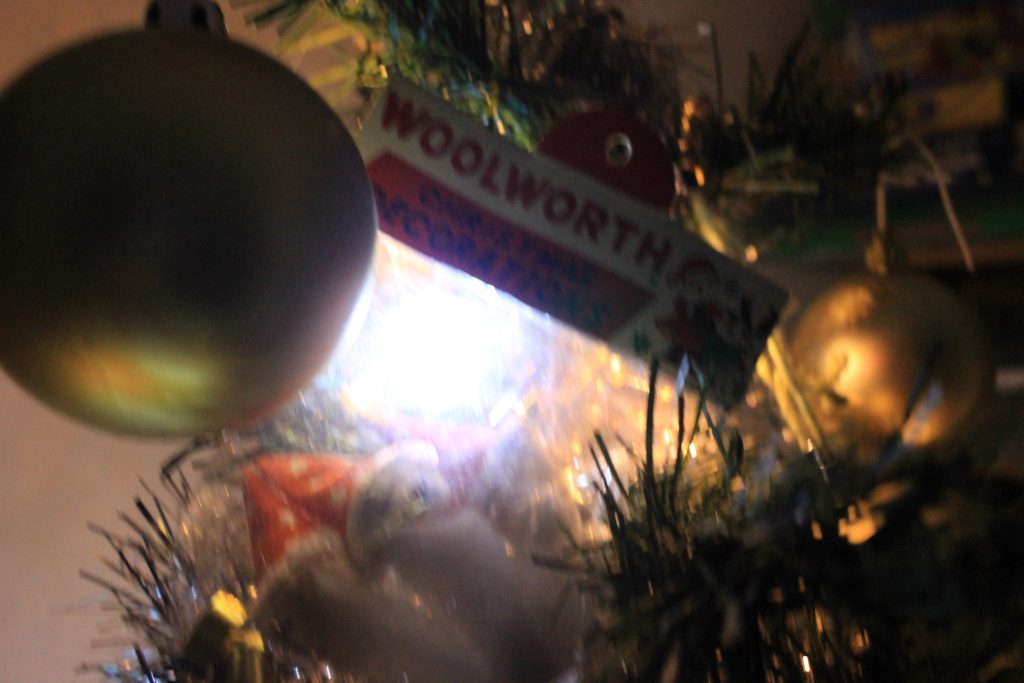
My eldest son was born in 1987, and even if, in truth, ‘home’ is mostly a state of mind, this change brought home out of the past and into the present. I started to look both ways[viii] and the towns and villages of my original landscape (despite being occasionally revived by visits), to seem a place on the far side of the tunnel – where perhaps internally, some deeper form of Christmas, also resided. In a way it would be good to swap Christmas for Yule or the Solstice. Certainly, for me the religious aspects persist as no more than an atmosphere of tradition – major ingredients in a bowl of spiced punch with numerous, consciously irreconcilable, elements. But like self-reliance versus a sense of community, change versus tradition is another of those sometimes-bitter paradoxes: how to dispense with the presented surface without losing the meaning behind; how to celebrate or be free without being destructive.

Little Witheridge/Whispering Radars, North Devon, 1996
Apart from six months in 1983, when the place I rented had a couple of storage heaters too expensive to run, until 2009, nowhere I lived had any heating to speak of – a situation quite common until the 1980s? Back in the days of single glazing and valuable draughts – before condensation became the enemy – my parent’s council house had only one open fire downstairs. Very occasionally on exceptionally icy mornings, my mum would light the gas oven and open the door and we’d all sit around for five minutes with a cup of tea before leaving . . . which sounds like something from the Second World War, a comfortable version of the woman crouching under the stairs of her bombed house. Nothing much else remains except some solid shelves strengthening the steps above her – on which a first aid kit and a bottle of medicinal brandy are covered in the dust from the aid raid. Rescue workers indicate that she should have a nip. “Oh no,” she rebukes them, “that’s only for emergencies.”
So, without the extreme of saying everyone in the old days grew up in a shoe box in the middle of a road[ix] – when was it that we all got to expecting central heating, endless clean washing and constant showers?
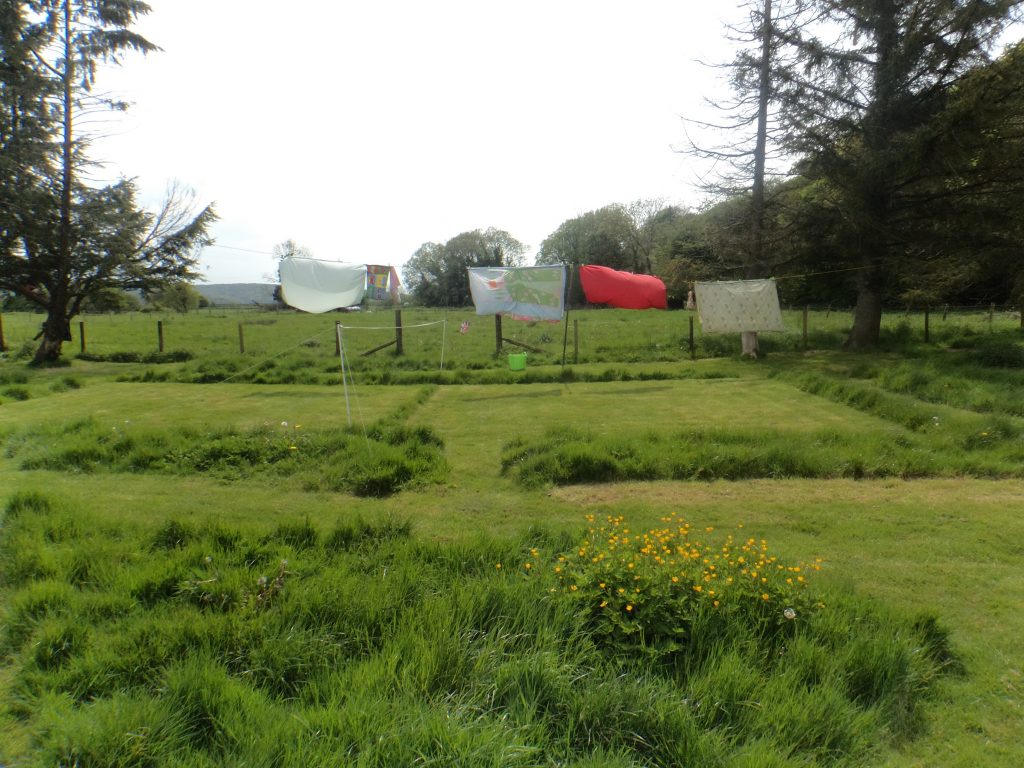
Home is where the washing is . . .
If home is where the family is, so your own family replaces the original one[x], while the orbit of friends changes or vanishes. Even with children, our life continued in a relatively fragmented way until I was 33, when we found a remote house to rent in North Devon. There we stayed for thirteen years, maybe the nearest we ever came to home in the traditional sense? In that time, despite our increasing sense of sanctuary, other subdivisions of ‘home’ developed. The Christmas punch flourished in a new location, while the tradition of the tea break snowballed in significance, until perhaps ‘home’ became where the tea break was – its success in granting a moment of agreeably predictable security, dependant on the quality of the B film or 60s/70s TV episode chosen to go with it[xi]. Even when these are dull, especially when watched with others – laughing or suspending disbelief – they create a reassuring atmosphere. If I lived in a capsule on the moon, I could believe I was at home while drinking tea and watching the best of these – one that contains both tradition and menace, such as the 1965 Avengers classic: Too Many Christmas Trees[xii].
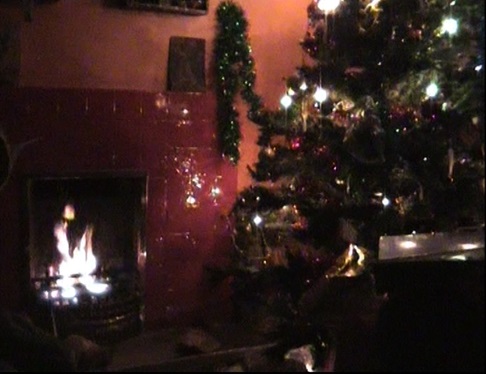
The fireplace at Tunnel Cottage, a still from: A Christmas Address from Whispering Radars
Crossing the fells in north-west Cumbria last month, my son and I were recalling the appealing hopelessness of certain old TV series we enjoyed. As with overdone Christmas decorations, the worse they are, the better they can seem in certain moods – distorted worlds half-seen in the holy bauble. Perhaps not so oddly, we ended up considering Good King Wenceslas[xiii]. At school this was one of the hymns we were forced to sing, and maybe because my memory of the lyrics didn’t extend beyond the first verse, plus the bits about mead and wine, a mental, Christmas card image of the peasant’s dwelling and a sense of the good King’s intention, the carol remains deeply evocative. Imagination replaces the curiously ambiguous moral of the story, which appears to be, more or less: if the rich give a little to the poor they get well paid back with blessings. We later discovered that Wenceslaus was bumped off by his younger brother, Boleslaus the Cruel, a name which reduced us to inappropriately helpless laughter.
Apparently, Wenceslaus was declared a Saint almost immediately after his murder and became the source of a cult as well as subject of four hagiographic biographies. A subsequent Pope (Pius II), later emulated the Good King, walking 10 miles barefoot in the snow and ice. Being stupid at 15, I once walked from Elmhurst estate, Aylesbury, to Dobbins Lane in Wendover barefoot in a heavy December frost and no-one ever canonized me! But I suppose, that was only six miles. Nevertheless, I am not satisfied.

Elmhurst Estate Circa 1968
No wonder for me that 60s and 70s housing estates all over the country, can so forcefully stir memories of the land beyond the tunnel: of both home and Christmas. Most of all perhaps, of home at Christmas? As we left Morecambe last week (having inadvertently strayed into an area classified tier 3), its passing estates added rum to my advent cake.
For a couple of years, a Morecambe and Heysham Digression has been at the edge of my mind – an area so fascinating in its contrasts and connections, that despite notes and images, its essence evades me. After fervour comes agitation or frustration: insults to the spirit of place. Only later can all the uncertain impressions be allowed to recede into that magical fogbank where all mysterious ideas and feelings gently agree that the greatest subtleties can never be clearly stated. The balm comes in being able to believe that there is some higher truth in being unfinished, in being apprehended solely inside . . . Under the streets wending inland from those distinctive few that terminate on the low cliffs, abruptly cut off, are patient secrets that will always escape – as elusive as the sense of home.
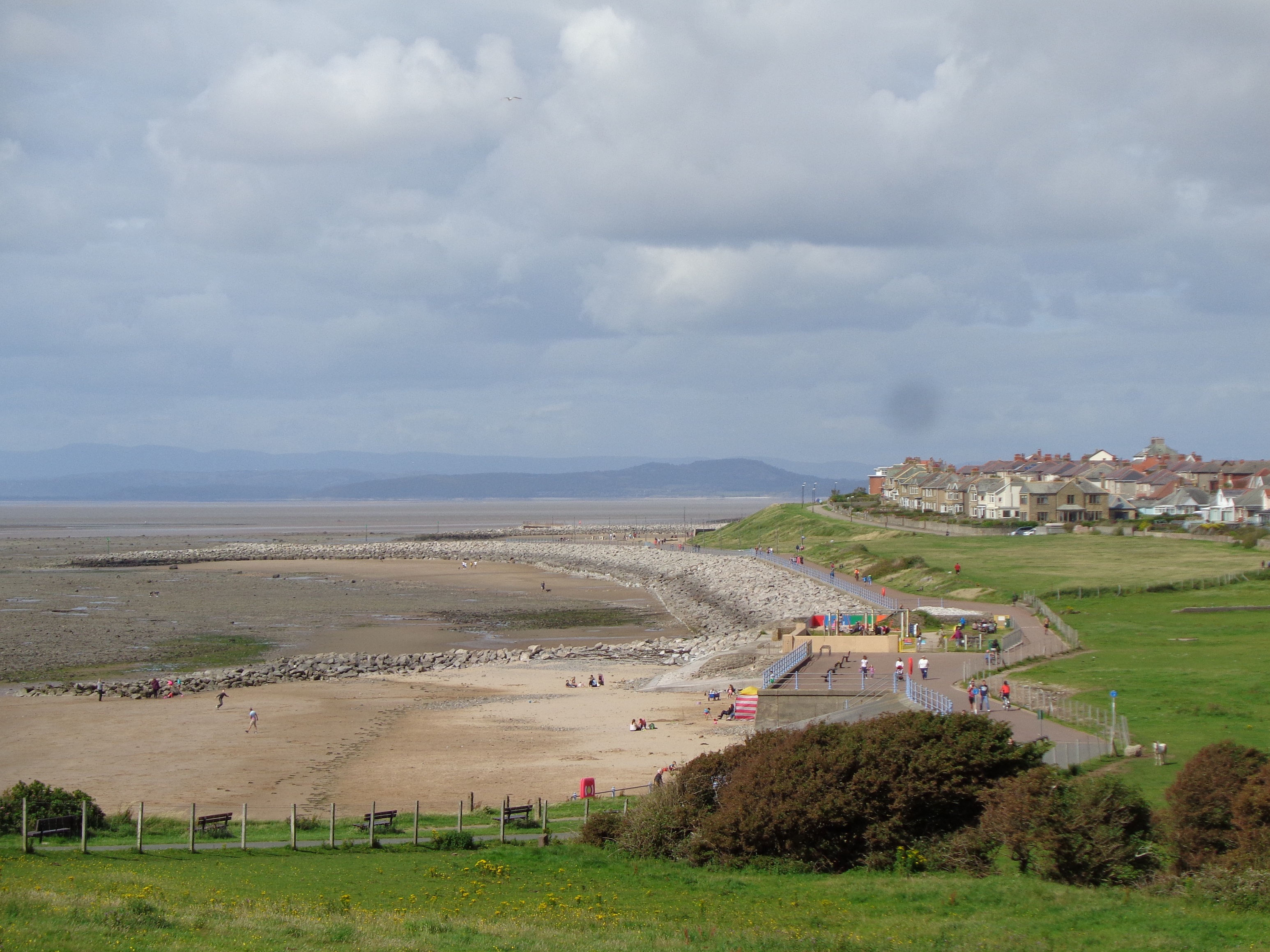
Heysham sands, Lancashire, has few similarities to the bay in The Ghost & Mrs Muir – whose Victorian bathing machines would have to be pushed a hell of a way out . . .
One of the complications of this projected Morecambe/Heysham Digression, is that the area from Heysham Old Village to Sandylands, can at times be so devastatingly reminiscent of one of my favourite films: The Ghost and Mrs Muir, (1947)[xiv]. “Only you could be so daft,” my daughter laughed – or words to that effect – when we cycled the entire stretch and beyond, on to Heysham’s port and Nuclear Power Station (!) in July. To be objective – a potentially dangerous attitude I only occasionally dabble with – she is right. The coast at Morecambe and Heysham bears none but the most basic resemblance to the coast and haunted clifftop house where Lucy Muir chooses to settle in the film. Plausibly, her retreat purports to be the English seaside, but naturally was filmed in California – principally at Palos Verdes near Los Angeles and 320 miles northwest on the Monterey Peninsula. That Lancashire could evoke California, or late 40s California, the Victorian southern coast of England remain amusing absurdities.
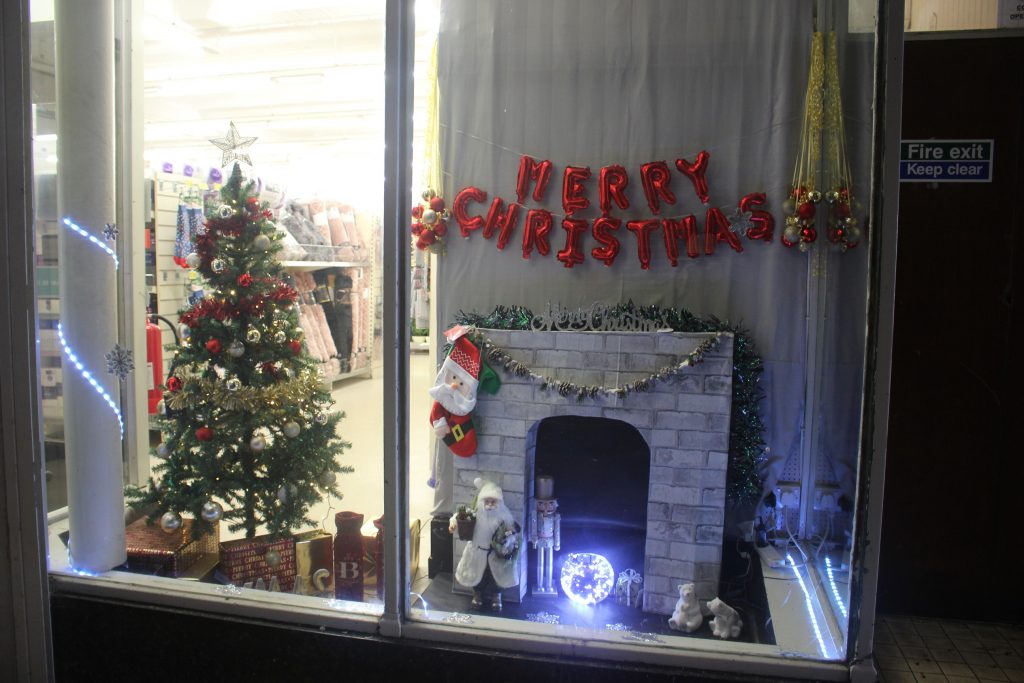
B & M, Morecambe, Lancashire, 9th December 2020
One of the subtexts of The Ghost and Mrs Muir is the life of the imagination[xv]. As a young widow, Lucy Muir (Gene Tierney) is not a great investor in daily reality. Despite having a child and a brief infatuation with cynical Miles Fairley she lives mostly in her mind, relying on her cockney maid for occasional companionship: As for living, our servants can do that for us[xvi]!
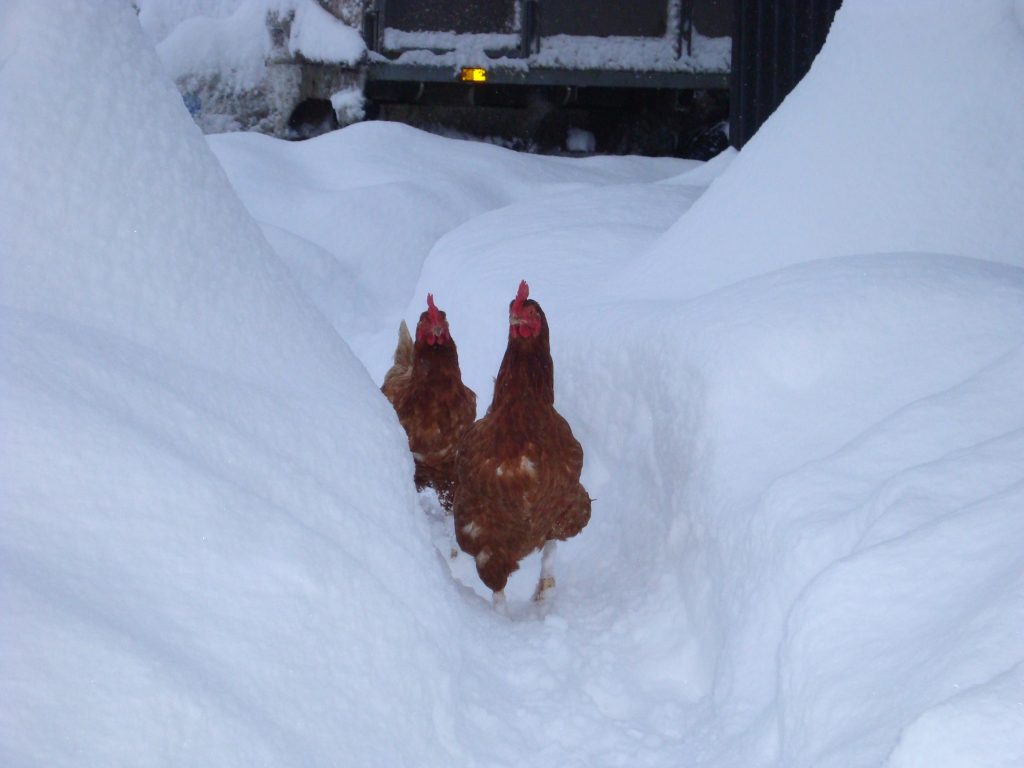
“As for living, our servants can do that for us.” Northumberland 2010
At the end of the 70s, I often worked for the Post Office in the approach to Christmas. Given a bike and dropped to the south-east of Aylesbury, Aston Clinton became my usual round, a mixed route that included a moderate area of council housing as well as several wealthier lanes. On our last day, a heavy fall of snow was perfectly timed to enhance the season and the regular postman, threw my bike in his red Comma van and suggested we do the housing estate together. Finishing the deliveries, we willingly got tangled in a big snowball fight with a flock of local kids – humorously played out. Retrieving the rest of my mail from his van, I set off to do the detached villas in their country-seeming lanes, where every fifth home at least asked me in for a small glass of sherry or whisky. Surely it would have been churlish to refuse these good Kings and Queens? Before long, every house in the world started to feel like home.
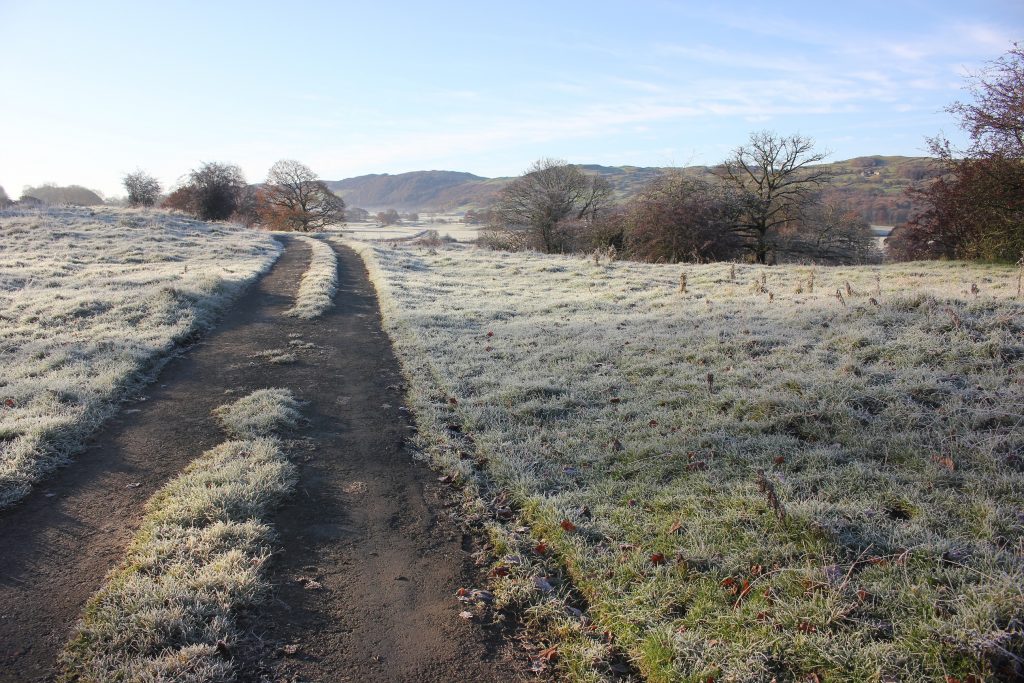
Throwback to the famous gated road of the 70s[xvii]
It’s not that “only children have homes”[xviii] but rather that many of us vividly remember our earliest home, no matter how unstable it may have been – the best moments magnified, the routine, the lost people and lost hopes, tinselled away.
© Lawrence Freiesleben,
Cumbria, December 2020
NOTES
[i] Adrian Apra, on Rossellini’s Germany, Year Zero (1948): As well as a “journey to the end of the world,” Germany, Year Zero, “is also a journey to a hypothetical paradise of dreams. The ruins that surround us are the evil we’ve brought upon ourselves.” “Only when we accept fully,” “this evil within us, can we hope to come out the other side.”
[ii] From: http://internationaltimes.it/too-many-christmas-trees/ : “By February all such numinous glamour has become dim. How much of life really exists inside, with eyes closed? One such remembrance comes to mind: of a winter cycle through frosty hills and darkening woods to descend into the country town of Honiton and encounter under the dark Yew trees of a church in a heavy twilight, children streaming from the lychgate with candles stuck in oranges.
A poster announced this was Christingle and it certainly threw me back (flashbacks within flashbacks) to distant parts of the country – to a festival of light in Norwich cathedral or a midnight mass in the village of Bierton. All these things most of us appreciate without any serious belief in their religious angle. Rather it’s the hushed ritual that inspires us, the light against the winter dark, the Yule or pagan aspects – all those things hijacked or attached to Christmas and now lodged in our collective memory.”
[iii] Mullholland Drive, Lost Highway, Twin Peaks: Fire Walk with Me, Blue Velvet and Wild at Heart
[iv] For a brief period, many of the more rural of these, were like islands floating on fields . . . and embodied, (or so it seems to me in retrospect), an Eden of sorts – the inhabitants lucky to escape the dangerous, jerry-built towers of city schemes: https://www.youtube.com/watch?v=Ch5VorymiL4&ab_channel=pedrobcordero.
[v] W.H. Auden, The Watershed, 1927
[vi] Ten Years Gone – by Led Zeppelin from the album Physical Graffiti, 1975.
[vii] From Maze End, chapter 42, Christmas in Arrowsby
[viii] Parents and grandparents one way, children the other.
[ix] https://www.youtube.com/watch?v=ue7wM0QC5LE&ab_channel=TheFullMontyPython
[x] But what happens to all the lonely people or those who are literally homeless https://www.bigissue.com/latest/social-activism/how-many-people-are-homeless-in-the-uk-and-what-can-you-do-about-it/
[xi] Our favourites being The Avengers, The Saint, The Rockford Files, Randall & Hopkirk, The Persuaders, Eddie Shoestring and, extending into the 80s, Bergerac.
[xii] Ibid: http://internationaltimes.it/too-many-christmas-trees/
[xiii] https://en.wikipedia.org/wiki/Good_King_Wenceslas
[xiv] https://www.imdb.com/title/tt0039420/ This film is always central to my notes, I’ve yet to read the book by Josephine Leslie: https://en.wikipedia.org/wiki/Josephine_Leslie
[xv] Despite which, personally, I always believe that the ghost (Rex Harrison), is real.
[xvi] https://en.wikipedia.org/wiki/Ax%C3%ABl
[xvii] See, http://internationaltimes.it/a-christmas-letter/
[xviii] To return to the thread set off by Adam Phillips https://en.wikipedia.org/wiki/Adam_Phillips_(psychologist) in part 8 of the Italian Digression:
https://internationaltimes.it/the-italian-digression-part-8/ and followed up in part 9:
https://internationaltimes.it/the-italian-digression-part-9-the-long-journey-home/
